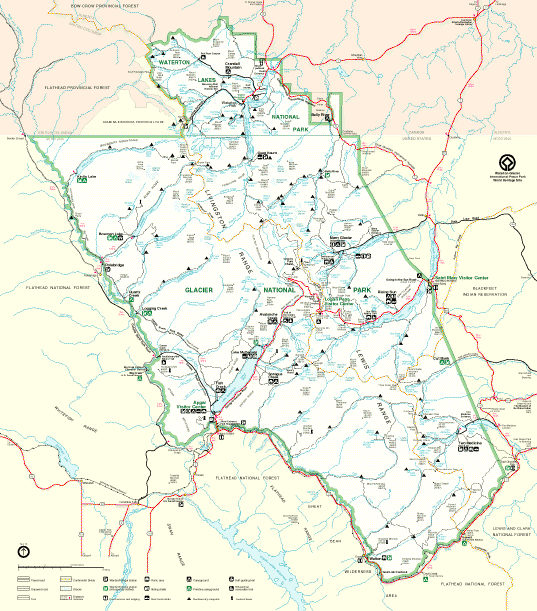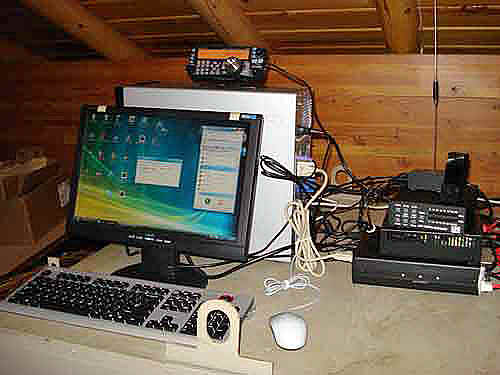Welcome to Handiham World!


My wife Susie and I are celebrating our 25th wedding anniversary today. What a fine and patient lady she is for putting up with my ham radio hobby all these years!
Since I am out of the office today, we will go right ahead with Avery's QTH, and we plan to return with the usual audio lectures in this Friday's educational mailing.
Patrick Tice
wa0tda@arrl.net
Handiham Manager

Welcome once again to my Humble QTH:
Minnesota Radio Camp, in the tall Pines, is now over for another year. What a camp this was. Many of the people who were just a voice on the radio were right there in person talking to each other and having meals with each other. It was so peaceful and quiet in the early mornings and late in the evenings that one could hear the Loon out on the lake and the raccoons fighting over some fish they caught. Above, high in the sky ,circled an eagle. The mist burning off the lake made it look as if we were on some science fiction planet in Star Trek or some other Science fiction show. During the day time , however, it was a different story as the radios were running full blast and the classrooms were going strong with people learning Amateur Radio to get or up-grade a license. For those with a license there were operational skills classes to learn proper procedures on the air. For practice we checked into both the PICONET on 80 meters and the Handiham net on the N0BVE repeater ( Node 89680 ) every day using Echolink. People on both nets were nice enough to let us take over as net control so everyone in operational skills class had several turns at being net control. It would be very safe to say that everyone in the operational skills class will feel right at home checking into their local net when they get home or even taking over as net control if necessary.
One of the interesting activities that took place was a "Fox Hunt" Two transmitters were hidden by our camp engineer, Lyle, K0LR, and people attempted to find them. Well, to make a long story short, no one located them. Lyle did too good of a job of hiding them. People were very close at times and must have gone by them several times with out locating them. There were some odd signal bounces off cars and other objects which made it a bit confusing as to where the actual transmitters were.
Even though sometimes the wind was causing some rough water and the boat captains kept the boats in there were times when the winds died down and the boats were out on the lake. Ah! The Icom IC-718 on the pontoon boat was used on 80 and 20 meters. They even checked into the PICONET on 3925 and became a net first. It was a first time a boat checked into the net. And! to top that off the boat even talked to the people in the operational skills class on HF. VHF was used before.
For a break some people took a field trip over to Itasca State Park (about 15 miles away ) to visit the Headwaters of the Mighty Mississippi River. The water is only about ankle-deep and you can walk across it in about 4 or 5 steps. It is very clear and clean at that point. The bottom can be easily seen. Also, some of the group went into the town of Lake George to look around and purchase items to take back home.
Can't believe some of the talent of some of the Amateurs at camp. In the evening, for example, we had our own guitar and piano concerts.
For those that wanted we had go to people to teach the Kenwood TH-F6A , TM-V71A, and the TS-2000.
The week just seemed to fly by and before you know it it was the last full day of camp and time for the VE's to give those that wanted it the exams.
Until next time 73 es DX de K0HLA Avery
You can reach me at: avery.finn@courage.org
Or call my direct line at 763-520-0515.


 Emergency responders learn something very important in their training: how to deal with complacency. While some of us are better at learning than others, everyone is affected by complacency. A perfect example of how we become complacent is that we go a long happily for many years without having to deal with a disaster, in the meantime failing to keep our radio equipment in good working order, failing to keep our go kits up to date, failing to have a family plan for dealing with emergencies, failing to stock extra water and batteries, and so on. It is really hard work to fight complacency. Things have gone well for so long that we simply assume the rest of today, tomorrow, the next day, and the next week will all go just as perfectly well.
Emergency responders learn something very important in their training: how to deal with complacency. While some of us are better at learning than others, everyone is affected by complacency. A perfect example of how we become complacent is that we go a long happily for many years without having to deal with a disaster, in the meantime failing to keep our radio equipment in good working order, failing to keep our go kits up to date, failing to have a family plan for dealing with emergencies, failing to stock extra water and batteries, and so on. It is really hard work to fight complacency. Things have gone well for so long that we simply assume the rest of today, tomorrow, the next day, and the next week will all go just as perfectly well.



